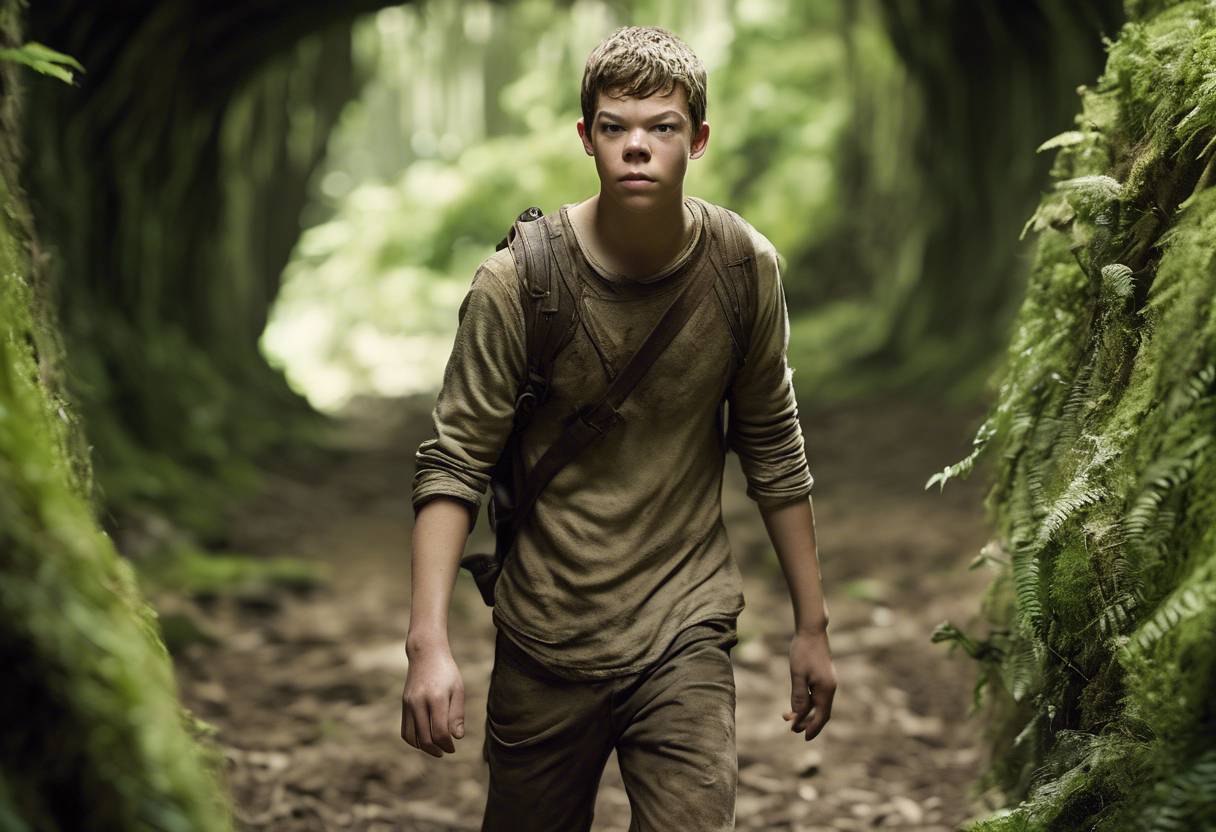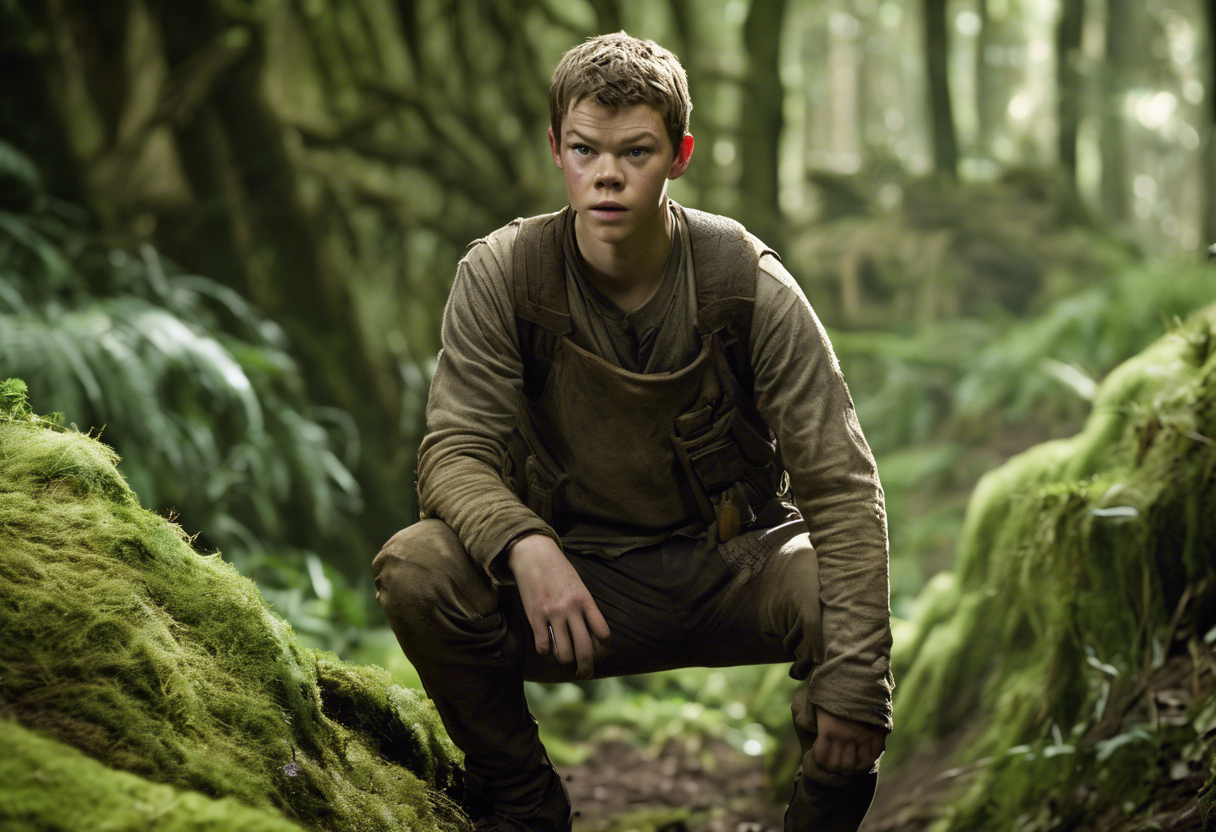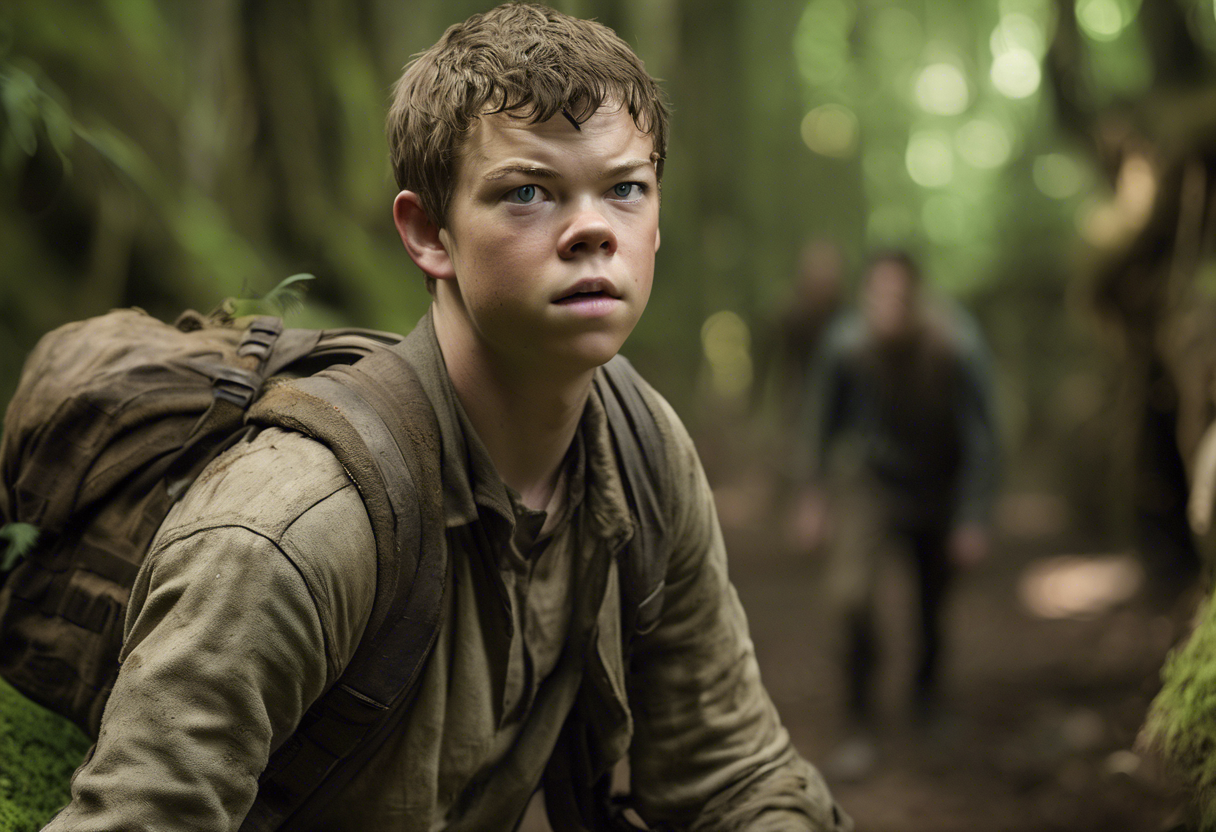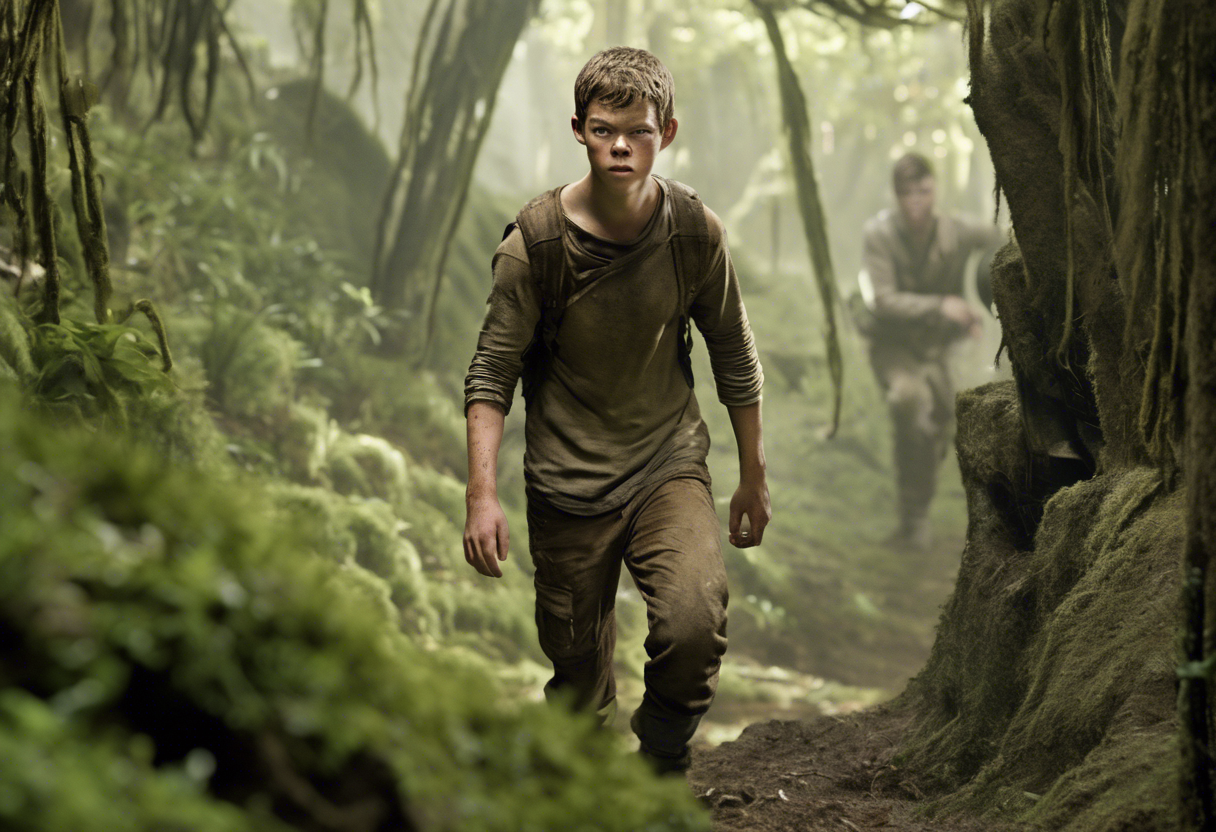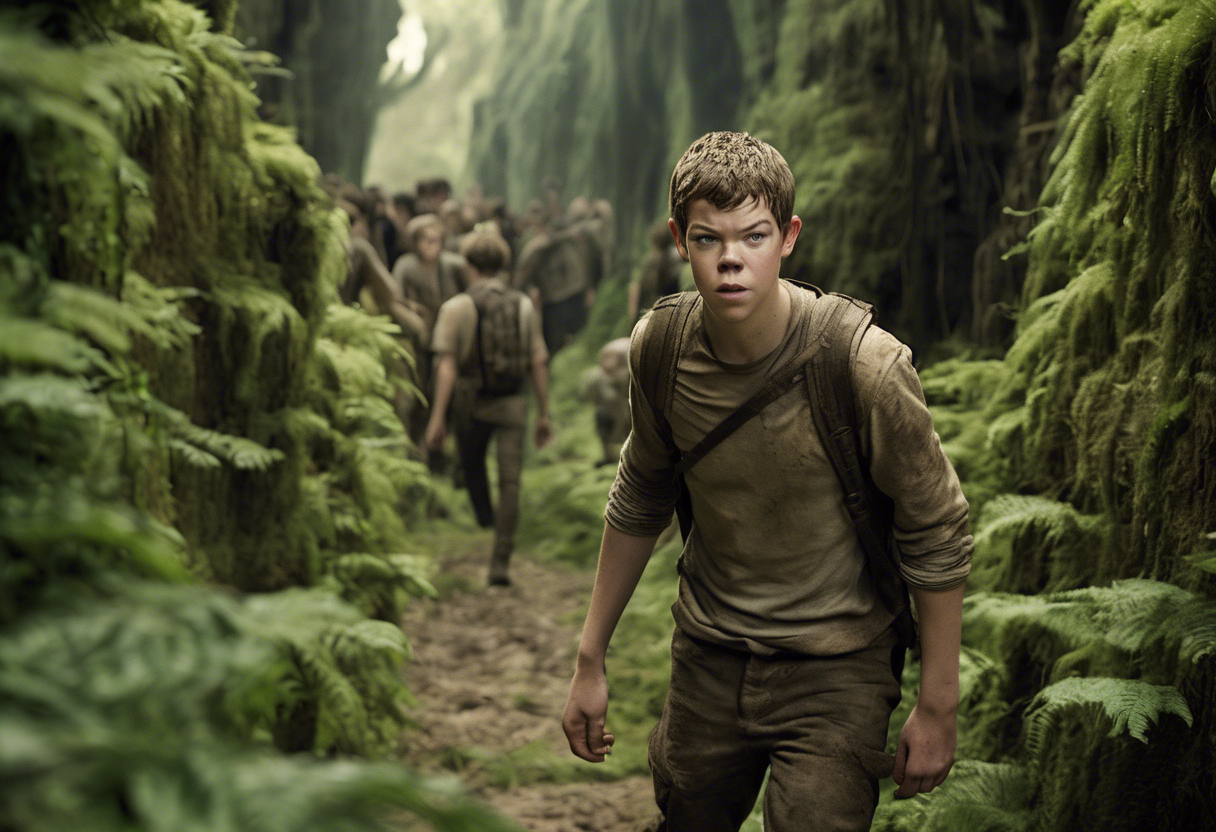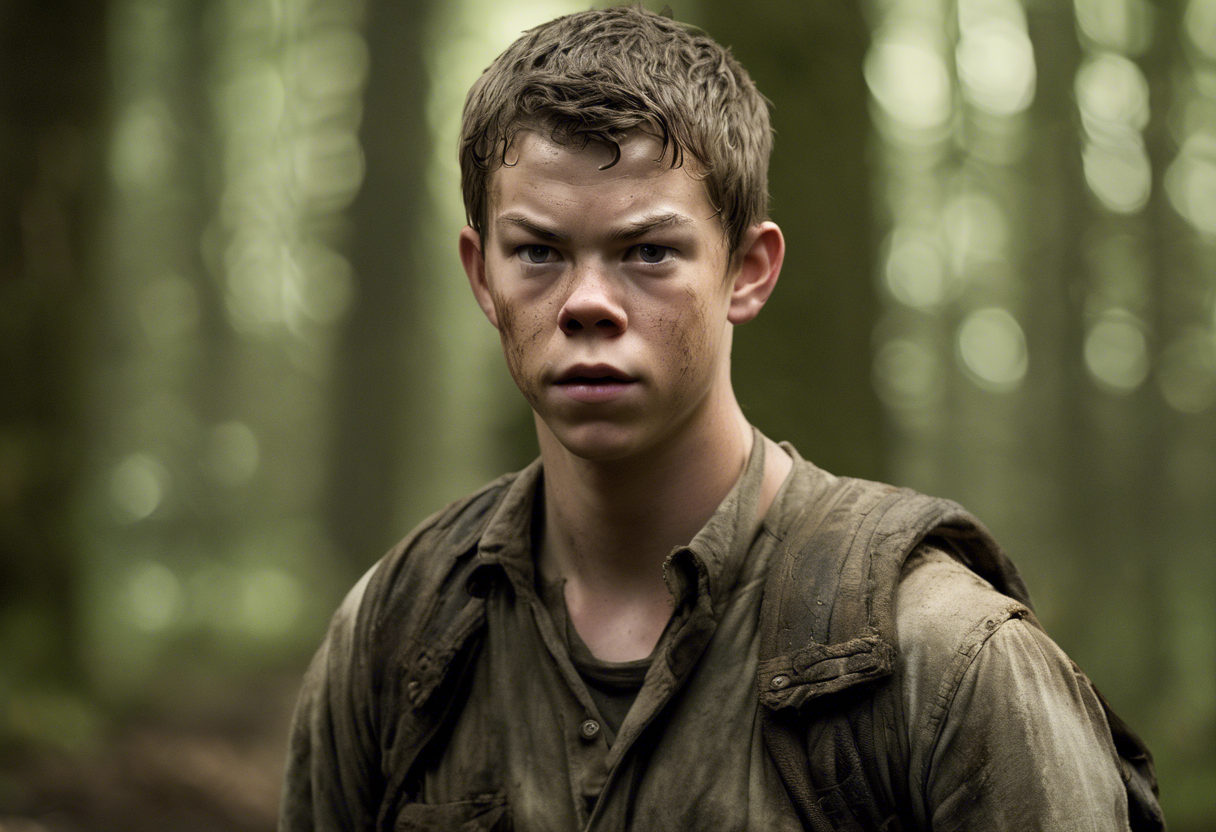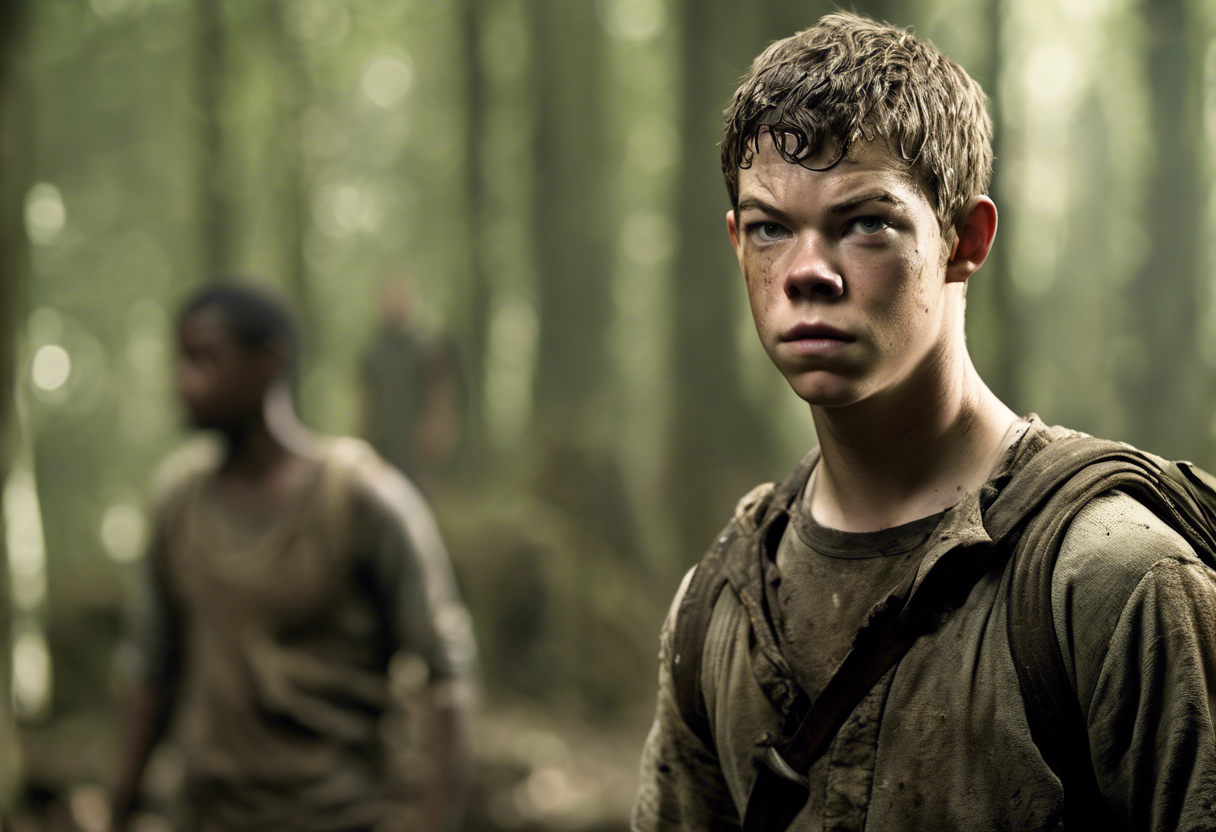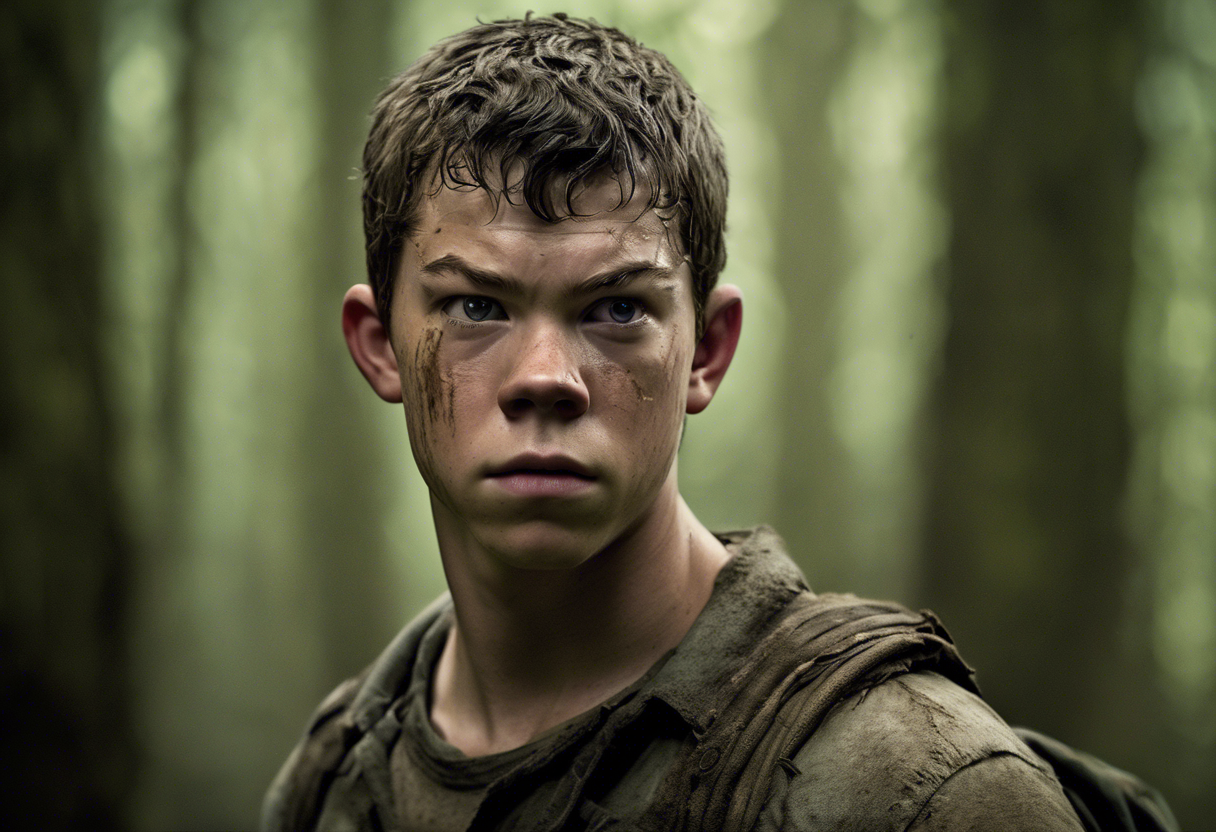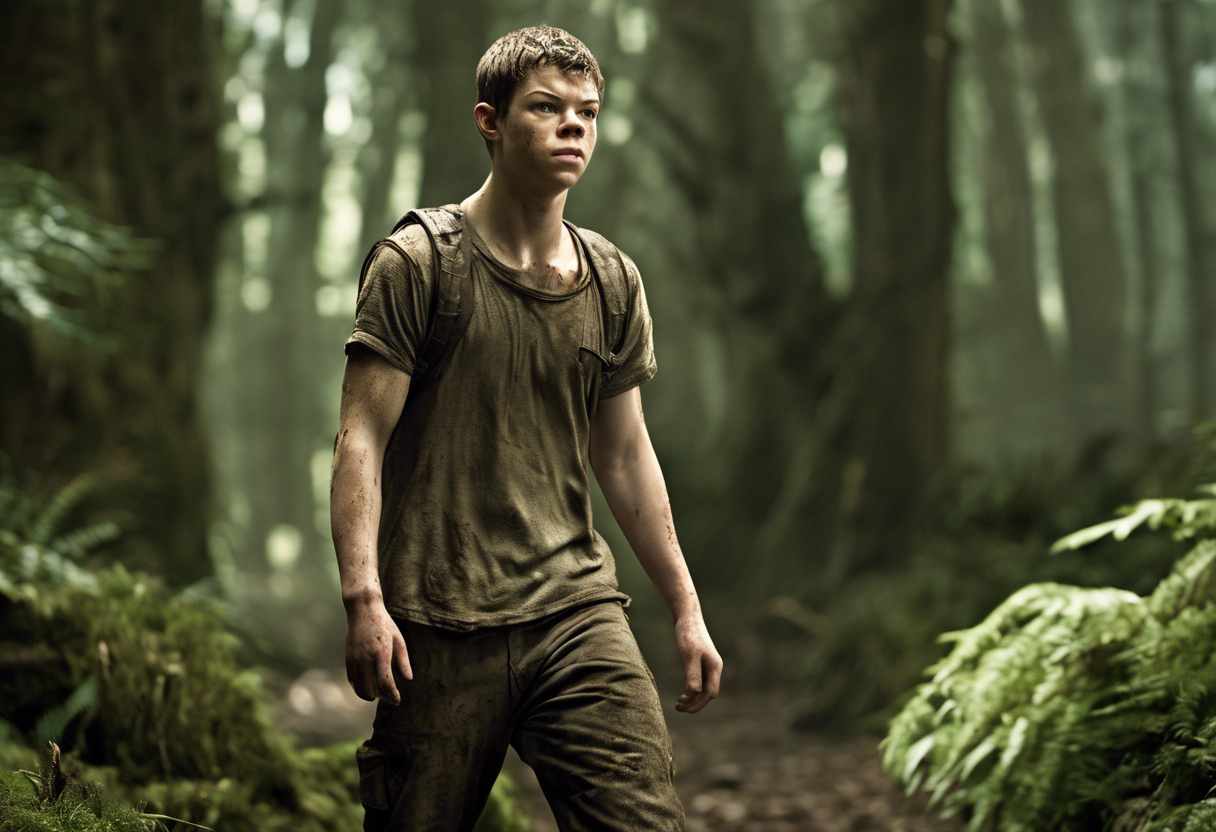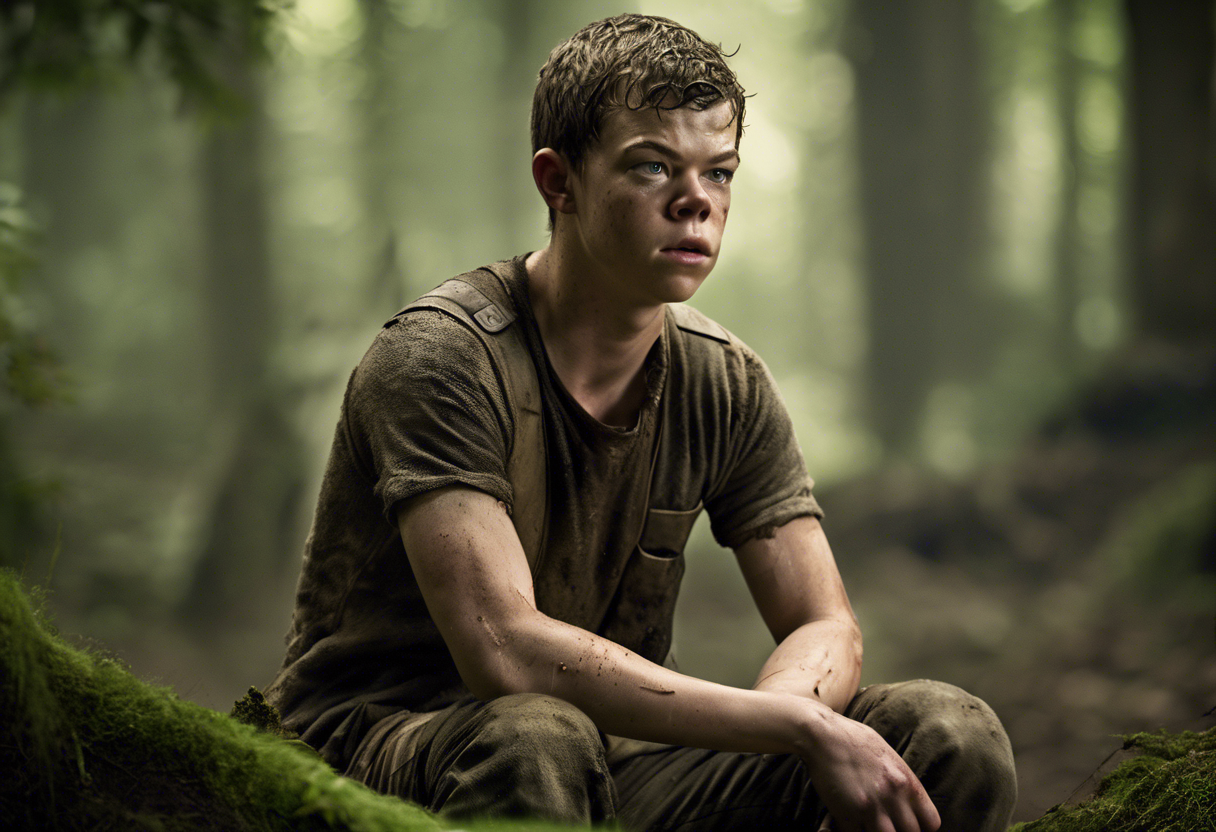Contents
Introduction
Gally, a pivotal character in the Maze Runner series, is created by author James Dashner and brought to life by actor Will Poulter in the film adaptations. Gally is one of the original Gladers, a group of teenagers trapped in a mysterious maze known as the Glade. His backstory, though not fully elaborated in the films, is marked by his experience of the Changing, a traumatic process that restores some of his memories from before his arrival in the Glade.
Gally’s defining traits include his physical appearance, which reflects his inner turmoil; he has a disfigured nose, discolored and broken teeth, and rotten breath [1][3]. These physical characteristics underscore his antagonistic and often hostile demeanor. Despite his role as the Keeper of the Builders, Gally perceives himself as the true leader of the Glade, highlighting his authoritarian and sometimes violent tendencies.
Gally’s significance in the narrative is multifaceted. He serves as a primary antagonist to Thomas, the protagonist, and his actions drive much of the conflict within the Glade. His character also delves into themes of survival, leadership, and the psychological effects of trauma.
Role in the Story
Gally’s storyline is deeply intertwined with the overall plot of The Maze Runner. From the outset, Gally is portrayed as a sulking, nasty bully who is hostile towards Thomas, the new arrival in the Glade [2][3]. His hostility stems from vague memories of Thomas that he regained during the Changing, although he does not fully understand the context of these memories.
Gally’s journey is marked by his constant opposition to Thomas’s attempts to uncover the secrets of the Glade and escape the maze. He attends every meeting regarding Thomas’s plans and vehemently fights against them, often resorting to threats and physical violence [1][2]. This opposition is driven by Gally’s commitment to the rules and safety of the Glade, as well as his deep-seated fear of the world outside, which he remembers as being ravaged by the Flare, a deadly virus.
A critical point in Gally’s storyline is his confrontation with Thomas, which escalates into a major scuffle. Following this incident, Gally is put into exile, further isolating him from the rest of the Gladers [3]. In the climax of the first film, Gally’s actions lead to a dramatic confrontation that results in his apparent death at the hands of Minho.
However, in the film adaptation of Maze Runner: The Death Cure, it is revealed that Gally was rescued by the Right Arm, a rebellion group fighting against WCKD (the organization responsible for the maze), and nursed back to health. This twist allows Gally to reappear in the story, surprising both characters and audiences [5].
Character Analysis
Gally’s personality is complex and multifaceted. He is portrayed as an antagonist, but his actions are motivated by a mix of fear, loyalty, and a desire for control. His experiences during the Changing have left him with fragmented memories of the outside world, particularly the horrors of the Flare. This trauma contributes to his hostility and resistance to change, as he sees the Glade as a safer alternative to the unknown dangers outside [2][3].
Gally’s strengths include his logical thinking and his ability to question the status quo, traits that make him a realistic and sometimes misunderstood character. However, his flaws are more pronounced; his unpredictability and tendency to resort to violence create tension and conflict within the group.
Despite his antagonistic role, Gally’s character development reveals a deeper emotional landscape. His fear of the outside world and his commitment to the Glade’s rules are rooted in a desire for survival and stability. This complexity makes Gally a compelling and relatable character, as audiences can empathize with his motivations even if they do not agree with his methods.
Themes and Symbolism
Gally embodies several key themes in The Maze Runner. One of the most significant is the theme of survival versus freedom. Gally’s preference for the known dangers of the Glade over the unknown horrors outside symbolizes the human tendency to cling to what is familiar, even if it is oppressive or dangerous [2][3].
Another theme Gally represents is the psychological impact of trauma. His experiences during the Changing and his memories of the Flare have left him with deep emotional scars, making him a symbol of the long-lasting effects of traumatic events.
Gally also serves as a foil to Thomas, highlighting the contrast between leadership styles and approaches to survival. While Thomas is driven by curiosity and a desire for freedom, Gally is driven by a need for control and safety. This contrast underscores the broader theme of leadership and the different ways individuals respond to crisis situations.
Cultural Impact
Gally’s character has had a significant cultural impact, particularly among fans of the Maze Runner series. His complex and often conflicted personality has made him a fascinating figure, with many fans appreciating the depth and nuance he brings to the story.
In adaptations and spin-offs, Gally’s character has been portrayed consistently with the original book series. His return in Maze Runner: The Death Cure was a surprise to both fans and critics, adding a new layer to his character and the overall narrative of the series [5].
Gally’s influence on popular culture is evident in the way he has become a archetype for the complex antagonist. His character challenges the traditional hero-villain dichotomy, making him a more relatable and human character.
Critical Reception
Critics and audiences have had varied reactions to Gally’s character. Some have praised his complexity and the depth he adds to the story, while others have criticized his violent tendencies and antagonistic behavior.
In terms of performance, Will Poulter’s portrayal of Gally has been generally well-received. Critics have noted his ability to bring depth and nuance to the character, making Gally more than just a one-dimensional antagonist.
The controversy surrounding Gally’s return in Maze Runner: The Death Cure has also been a topic of discussion. Some fans felt that his resurrection was inconsistent with the original story, while others appreciated the new direction it took the narrative in [5].
Legacy
Gally’s enduring appeal lies in his complexity and the themes he represents. He is a character who challenges traditional notions of heroism and villainy, making him relatable and compelling to audiences.
In contemporary discussions, Gally’s character continues to be relevant. His portrayal of trauma and survival resonates with current themes in literature and film, such as the psychological effects of conflict and the human response to crisis.
Gally has also inspired other works and character archetypes. His complex and nuanced personality has set a precedent for more multifaceted antagonists in young adult fiction and film.
References
- https://www.sparknotes.com/lit/maze-runner/character/gally/
- https://www.shmoop.com/study-guides/the-maze-runner/gally.html
- https://jgdb.com/literature/study-guides/character-gally
- http://kaeruheaven.under.jp/slicecheese/archives/000149.html
- https://screenrant.com/mazer-runner-death-cure-gally-alive-how/

